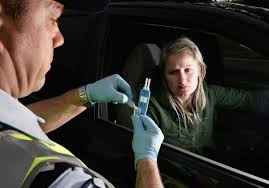Drug Driving and Cannabis Impairment – What You Need to Know
In April of this year, ABC News reported that between July 2014 and June 2015 almost 5,000 drivers in NSW were charged with drug driving offences according to freedom of information (FOI) documents that were released. NSW Police have one of the biggest mobile drug testing programs in the country targeting 30,000 tests this year with hopes to expand to 100,000 over the next two years.
According to the National Road and Motorists Association, cannabis is the most commonly consumed illicit drug in Australia and a report by the Australian Drug Association found that over 12% of drivers admitted to driving within three hours of using cannabis in the previous 12 months.
Is Australia’s roadside drug testing unfairly targeting marijuana users?
Critics argue that drug testing is unfair and severely impacts the rights of individuals and their families because these tests only determine if there are drugs in a person’s system and not whether someone is actually impaired while driving.
When it comes to drug testing, cannabis impairment is a particularly contentious issue because unlike other illicit drugs, cannabis is renowned for staying in one’s system for days or even weeks after initial consumption and long after it impairs driving.
That is why NSW Greens MLC David Shoebridge says drug driving legislation should be similar to those in the UK and drivers should be tested for impairment levels in the same way alcohol impairment is tested.
As Greg Barns points out in ABC News, drink driving laws are based on a rich amount of data that has been accumulated through exhaustive studies that prove a link between the level of alcohol in a person’s blood and how it impairs his or her capacity to drive a motor vehicle safely versus Australia‘s drug driving laws that have “no evidential basis.”
How much pot is too much? Measuring cannabis impairment.
It is well established that a driver can have a threshold of 0.05 blood alcohol concentration without it impairing his or her ability to drive. However, when it comes to cannabis there is no allowable limit or standard way of measuring cannabis impairment like there is with alcohol. As Shoebridge explains, roadside drug tests test for the smallest detectable trace element of drugs in a person’s system. They do not test for impairment. That means that the spliff you smoked three days ago could land you with a conviction even though you were not impaired while actually driving.
Minister Duncan Gay, a spokeswoman for NSW Roads said in a report in ABC News that their research concluded that drugs were only detected in a person’s saliva for 12 hours after being ingested.
However In February of this year, Joseph Ross Carrall was acquitted on charges of impaired driving under the influence of cannabis because when he tested positive in a roadside drug test, the police officer told him that he would be able to drive again until after approximately one week. Carrall waited nine days before driving again but after he was pulled over again, a second roadside test revealed that there was still trace amounts of cannabis in his system.
Also in cases where traces of cannabis are found, there is no way to determine when the drug was consumed or how much was consumed. Studies have shown that cannabis can remain in a person’s system for days, even weeks because THC, the psychoactive ingredient in cannabis, has according to the National Road and Motorists Association (NRMA), the shortest ‘half-life’. THC will register in urine tests over the long term although the chemical is active for only a few hours after consumption. This is because THC is rapidly absorbed and deposited in the fatty tissue and the body builds up reserves of it.
Another problem is that no two people metabolise THC in the same way so one person may be impaired at lower consumption levels than another. This is especially true for naïve versus habituated users. It can also be impacted by a person’s BMI.
According to National Cannabis Protection and Information Centre (NCPIC), chronic cannabis users need a much higher dose than naïve users to reach a level of impairment. Also, studies have shown that cannabis can be eliminated within hours after use (usually within 24 hours) for naïve users as compared to habituated users, which studies have shown take as long as two weeks to be eliminated.
Stephen Blanks, president of the NSW Council for Civil Liberties, argues that the strict liability offence is “unfair to drivers” because a charge of Driving with an Illicit Drug Present in Blood does not measure the level of impairment. It only measures whether a person has recently used a drug.
What research tells us about cannabis impairment
According to the (NCPIC), research has found that cannabis use effects attention, slows reaction time, impacts time and distance perception, hand eye coordination and has a negative effect on decision making. They also say people who drive under the influence of cannabis increase their chance of having a car crash by up to 300%. Although the overall results from studies in the area of cannabis impairment confirm that cannabis use can adversely affect driving performance it has yet to say at what quantity and for how long it has been in a person’s system.
They also highlight that many of these studies were conducted under controlled conditions with large amounts of cannabis, which critics argue does not reflect real life marijuana ‘street’ usage and therefore cannot be applied to real world driving.
Also, another problem in the research is that there may be other factors at play besides cannabis use such as the people who are involved in crashes being young and male.
Is roadside drug testing fair?
Critics say random roadside drug testing is unfair because there is no documented relationship between the results of a drug test, pharmacological effect, time of use and amount used. They argue it is particularly unfair because there is currently no way to identify impairment.
Mr. Carrall’s lawyer, Steve Bolt, said that taking away someone’s licence after he or she had smoked a joint or two days before getting behind the wheel is akin to someone losing his or her licence just because he or she had a beer three days before driving.
Australian National University and health and justice expert David McDonald points out according to the Sydney Morning Herald that roadside drug testing is a “gross waste of public funds.” According to data from the NSW Bureau of Crime Research, the amount of NSW drug driving cases increased 109 per cent in 2015. A 2007 report by the National Road and Motorists Association (NRMA) however revealed one in four motorists convicted of drug driving walked away penalty free.
Shoebridge says “nearly 100,000 NSW residents are subjected to these drug driving tests each year and as a result thousands of people are losing their licences, having to pay significant fines, and people’s jobs are in jeopardy, and all due to having a miniscule quantity of drugs in his or her system and there being no evidence that they were a danger to other users of the road.
Blair’s response to that is the mere fact that drugs can sometimes remain in a person’s system for several days after consumption should act as a further deterrent to drivers.







